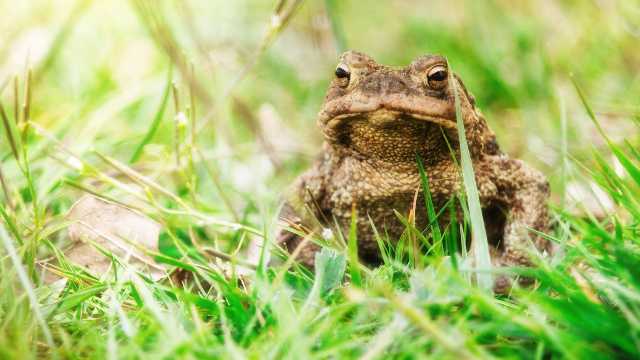By Bill Cook
MSU Extension Biologist and Forester, retired
At my latitude in the southern Upper Peninsula, the spring peepers begin with a few peeps in early April, rarely in late March. By mid-May, certain woodlands are a-scream with hoards of the little buggers. Morning commuters cannot miss the cacophony, even from inside their cars with radios thumping-out music.
Within the cloud of peeper screeching, a listener will also find the sounds of the chorus frog. Imagine running a fingernail along the teeth of comb. That’s similar to a chorus frog.
Ever try sneaking-up on a pond rife with singing peepers? Good luck. When you’re breakfast for an entire host of predators, you’re mighty sensitive to movement. Yet, if you wait long enough, and don’t move, the singers will eventually return to their songs.
Not long after the peepers and chorus frogs, the wood frogs call. They sound a bit like quacking baby ducks, or chewing on a piece of rubber.
I think my favorites are the toads. They belt out arias of single tones lasting 20 to 30 seconds, each toad a bit off-pitch from another. An hour after sunset, one might think alien invaders have landed.
Then, all summer long, the treefrogs blurt out their presence. I liken their sound to high-pitched baby farts in a bathtub. Maybe I shouldn’t use that word, but I’ll bet you’ll remember it when you wonder about those woodland sounds. Treefrog songs can easily be mistaken for a bird call. It’s these guys that you sometimes find on windowsills during the summer. They can be gray, brown, or green.
These five species are what I consider to be the woodland frogs, including the toad. There are other frogs more oriented towards wetlands, such green frogs, mink frogs, pickerel frogs, leopard frogs, and bullfrogs. They each have their own peculiar sounds.
Michigan sports about 25 species of amphibians, mostly frogs and salamanders, which in the world of amphibians is a rather small showing. Cold northern latitudes are not friendly to little critters with thin skins.
All of our Lake States frogs (and toads) need ponds for breeding. Who doesn’t remember tadpole biology from elementary school, and the miracle of “metamorphosis”? In adulthood, woodland frogs tend to leave the pond for much of the summer. This is a fine adaptation, as many of those spring ponds, sometimes called “vernal pools”, usually dry up.
For woodland owners, listening to the sequence of amphibian mating calls is a particularly delightful rite of the spring season. A managed forest can enhance woodland frog habitat. Those vernal pools need protection, which isn’t a hard thing to do. Just keep out of them.
Larger downed branches and logs make for good habitat, both for hot summer days and overwintering. This woody material is called “coarse woody debris” or “CWD”. Not to be confused with chronic wasting disease! Logging can generate quantities of this valuable habitat component.
Opening the forest canopy allows more sunlight, which encourages the growth of shrubs and baby trees. This understory layer provides cooler and moister micro-environments where frogs like to hang out.
I cannot remember any forestowner who managed their woods just for frogs. However, many of our timber management practices are also good for amphibians. Of course, that’s true for many non-timber and wildlife habitat conditions, too.
Part of the satisfaction of owning and managing a forest or woodland is understanding how management can enhance so many aspects of forest ecology. Timber management creates many positive eddies of habitat management in its wake. The spring season is an especially good time to discover these gems.







